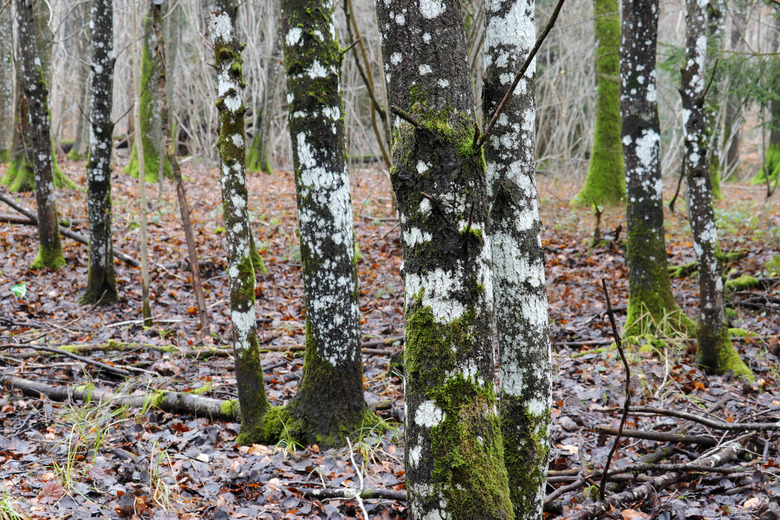Lichen And Moss On Trees And Shrubs
We may receive a commission on purchases made from links.
In overgrown forest landscapes, mosses and lichens are a common sight on the trunks and branches of trees and shrubs. But what exactly are these unusual plants? Should you get rid of them? And if so, how?
Meet the Lichen
Meet the Lichen
If you enter a forested area where trees and shrubs are dying, the exposed branches are likely to contain unusual, plantlike organisms known as lichen. But don't leap to the easy assumption that the lichen has damaged the trees. Lichens have played no role in the tree's health issues. Rather, the naked branches simply give lichens the chance to access sunshine without competition.
These adaptive organisms result from an unlikely union of two fungi and a green alga. This symbiosis produces a long-lived organism. The alga produces energy through photosynthesis, while the fungi supply water and essential minerals and produce a protective structure. United as a lichen, they survive and even thrive in some of the harshest environments on earth.
Meet Forest Mosses
Meet Forest Mosses
Mosses are resilient, ancient plants that look more like plants than lichens do. They are part of the plant division Bryophyta, which has been on the planet for millions of years. They form a soft, green layer on trees and shrubs when they are in heavy shade. Mosses are nonvascular plants — plants without roots — that produce spores for reproduction rather than seeds.
While gardeners commonly refer to this plant as "moss," the name "mosses" is more accurate. That's because mosses are miniature plants that grow together in colonies. The carpet of moss you see in your garden is not one plant but thousands. Mosses are found in habitats from wetlands to caves and from woodland forests to gardens — anywhere it is damp and moist.
Mosses tends to appear and grow during the winter due to the moist, wet conditions often present. Lower temperatures and less hot sun also help mosses to thrive. Full sunshine dries out and even kills mosses or at least renders them dormant for the season.
Are Lichens and Mosses Bad for Backyards?
Are Lichens and Mosses Bad for Backyards?
Lichens are not generally considered plant pathogens or harmful to trees. Although their presence indicates that plants are in poor health, that poor health is not caused by lichens. The best way to keep lichens out of your backyard is to nurture your plants into health. Lush foliage and layered leafing will eliminate sun-seeking lichen quickly.
Likewise, mosses are not evil tree destroyers but serve beneficial purposes in an ecosystem. They help provide insects with a safe habitat and a source of nutrients. Mosses also filter and retain water, firm the ground, and absorb harmful CO2 from the atmosphere.
Get Rid of Mosses and Lichens
Get Rid of Mosses and Lichens
If you decide that you can no longer live with the mosses and lichens in your backyard, the best option is to use cultural improvements. Lichens thrive in sunny areas on slow-growing, bare, drought- or heat-stressed plants. Follow the preferred watering, fertilization, soil maintenance, and pruning practices for your specific tree or shrub species to create vigorous, healthy trees and shrubs with dense foliage. Mosses grow in shaded, crowded areas, so you can control them by pruning back excess growth to increase direct sunlight and air circulation.
Alternatively, it is entirely possible to physically remove lichens and mosses from a tree or shrub. Try removing moistened lichen with a scrub brush after rainfall. During the winter dormant period, remove moss by hand from small shrubs or use a power washer to remove moss from large branches and trunks. Use a power washer carefully to avoid damaging small branches or buds.
